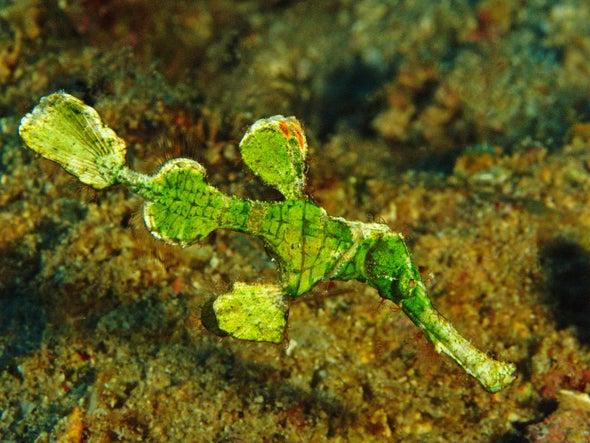To effectively protect a species, conservationists need key pieces of information: where it lives and what threats it faces. Yet scientists lack these basic data for thousands of species around the world, making it impossible to know how they’re faring—let alone to take steps to ensure their survival.
For these “data deficient” species, a new study published in Communications Biology on August 4 suggests that no news is probably not good news. The authors used machine-learning methods to predict the conservation status of 7,699 data-deficient species—from fish to mammals—and found that 56 percent are likely threatened with extinction. The findings are especially concerning, given that just 28 percent of species whose conservation status is known are deemed to be at risk of disappearing, says lead author Jan Borgelt, a doctoral candidate in industrial ecology at the Norwegian University of Science and Technology. “Things could be much worse than we actually realize,” he adds.
Borgelt and his colleagues based their analysis on the International Union for Conservation of Nature (IUCN) Red List of Threatened Species, a global database that categorizes the extinction risk posed to more than 147,500 species. Depending on the species group, however, about 10 to 20 percent of animals, plants and fungi on the Red List are listed as data-deficient, meaning there is inadequate information to determine their conservation status one way or the other. This causes problems for scientists seeking to understand threats to biodiversity, as well as for policy makers trying to design effective local, regional and international conservation strategies.
Borgelt and his team built a machine-learning model based on existing data from 28,363 Red List species whose conservation status had already been assessed. They included information from the IUCN and other reliable sources about those species’ distribution, habitat, and threats and then used those data to train their model to come up with a generalized technique to predict a particular species’ risk of extinction. Next, the researchers applied the model to predict the conservation status of 7,699 data-deficient species included on the Red List. The only prerequisite was that those species’ geographical range be known.
The model projected that more than half of the data-deficient species included in the analysis are threatened with extinction. Some animal groups seem to be in more dire straits than others. According to the findings, 85 percent of amphibians, 62 percent of insects, 61 percent of mammals, and 59 percent of reptiles that are data-deficient are probably at risk of disappearing. The results also indicated that data-deficient species in Central Africa, southern Asia and Madagascar face especially high levels of threat.
While there is uncertainty surrounding the findings, Borgelt and his colleagues have received an indication that their predictions are fairly accurate. After conducting the analysis but prior to publishing their study, the IUCN released an updated Red List with conservation listings for 123 formerly data-deficient species. Three quarters of those real-world statuses matched the predictions made by the researchers’ model.
The new finding in Communications Biology that data-deficient species may be more threatened than species whose conservation status is known is not necessarily surprising, but it does reinforce the need for comprehensive extinction risk assessments, says Louise Mair, a conservation biologist at Newcastle University in England, who was not involved in the research. “Up-to-date Red List assessments are crucial to inform action and measure progress,” she says.
The biggest obstacle for carrying out such assessments is not a lack of technical expertise for evaluating species, Mair adds, but a lack of resources. “Conservation faces a massive funding shortfall globally,” she says.
To spend limited funds as wisely as possible, Borgelt suggests that predictive models could be used to identify and prioritize species that seem to face the greatest threats. “These new machine-learning technologies would not replace experts but would assist in guiding and allocating resources,” he says. “Some species groups are really much more urgent than others.”


